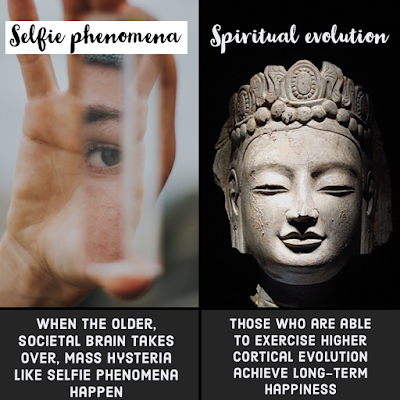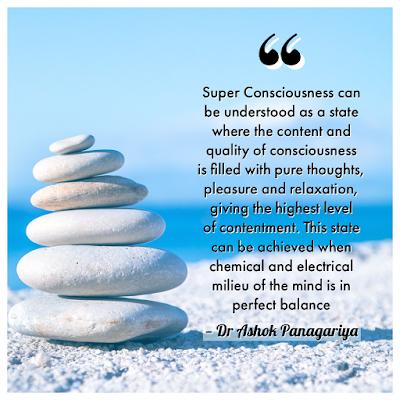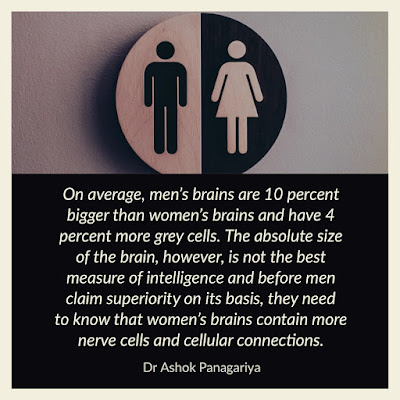Selfie is a tech leap. But everytime you click one, the primitive mind is taking control
Admit it! We all love taking selfies. It’s hard to imagine life without having clicked the perfect moment and having preserved it as a fond memory. With technology advancing almost every day, selfie is a trend that has emerged on the digital scene, taking the world by storm. What, however, started as a fun way to click self-portraits, has taken a new turn with people making incredibly risky attempts to get the best shot in a narcissist urge to draw attention to themselves and feel loved.
Who doesn't like taking selfies? But make sure to stay alive while clicking your next picture-perfect selfie. With a mind-boggling increase in the number of smartphones and selfie sticks, people have become increasingly obsessed with snapping the most spectacular selfie. This fanaticism even pushes them to unimaginable, dangerous places like train tracks, hanging from buildings, bridges and even restricted no-go areas, which has led to a significant rise in the number of selfie related deaths worldwide. This has also given birth to a new vocab Killfie which means people indulging in daredevilry and taking death-defying pictures by risking their lives. Clearly, selfie is taking its toll.
Our quest for an epic self-portrait can sometimes have drastic results. India has a surprisingly chronic selfie-problem, with more fatal mishaps than anywhere in the world. According to a research, there have been around 127 selfie-related deaths globally, with a whopping 76 deaths reported in India alone.
Researchers have analysed, that men are more likely to take selfies in dangerous situations. It has also been found that majority of the victims who died taking the best shot of themselves are under the age of 24. The study has revealed that a bizarre and twisted thought process has taken shape in the minds of the youth where they believe that taking snaps on or next to a train with best friends is cool and that a shot with a beloved at a terribly dangerous place is romantic and a sign of never-ending friendship.
Let’s understand the psychology behind people taking selfies. Why people take selfies? And, how did taking one own's photograph turn into a narcissistic leap for mankind? Selfie became popular due to the following reasons:
Selfies are usually taken to capture a fond memory and to present oneself in the best light to others. For this, human mind thinks how we look and what might interest others in us before posting a selfie. In a quest for that perfect shot people tend to go to dangerous places, which actually, as the records suggest, can prove fatal. According to experts, this trend is a part of a visual culture where we always want to win the rat race and try and stay ahead in the game. We have this insatiable urge to create something new, draw other’s attention and sometimes we are willing to go the distance and achieve this by taking unnecessary risks.
On the basis of this premise, I can conclude our life is modelled through various neuro-chemical and neuro-electrical phenomena straddling the two widely differing realms of oneself and spiritualism. This emotional quest takes us through hell and heaven with different kinds of pleasures being perceived, experienced and enjoyed.
My study states, when the older and societal brain takes over, it creates a mass hysteria like selfie phenomena. On the other hand, individuals who are able to evolve and exercise higher cortical evolution, go beyond the state of real pleasure and long term happiness to achieve that kick which may sometimes prove dangerous. In conclusion, human’s quest for that perfect selfie is not likely to abate anytime soon. It is just important to ask ourselves how far we are willing to go for that perfect shot.
Of course, inner happiness is central, but life is more important. So, the next time you are taking a selfie in great outdoors, do yourself a favour and stay safe! It’s good to admire yourself, but before that take all the precautionary measures by looking properly at the surroundings. After all, life is too important to be lost to a momentary adrenaline rush, an ephemeral feeling of self importance, and the false notion of having found the Neverland.
Who doesn't like taking selfies? But make sure to stay alive while clicking your next picture-perfect selfie. With a mind-boggling increase in the number of smartphones and selfie sticks, people have become increasingly obsessed with snapping the most spectacular selfie. This fanaticism even pushes them to unimaginable, dangerous places like train tracks, hanging from buildings, bridges and even restricted no-go areas, which has led to a significant rise in the number of selfie related deaths worldwide. This has also given birth to a new vocab Killfie which means people indulging in daredevilry and taking death-defying pictures by risking their lives. Clearly, selfie is taking its toll.
Our quest for an epic self-portrait can sometimes have drastic results. India has a surprisingly chronic selfie-problem, with more fatal mishaps than anywhere in the world. According to a research, there have been around 127 selfie-related deaths globally, with a whopping 76 deaths reported in India alone.
Researchers have analysed, that men are more likely to take selfies in dangerous situations. It has also been found that majority of the victims who died taking the best shot of themselves are under the age of 24. The study has revealed that a bizarre and twisted thought process has taken shape in the minds of the youth where they believe that taking snaps on or next to a train with best friends is cool and that a shot with a beloved at a terribly dangerous place is romantic and a sign of never-ending friendship.
Let’s understand the psychology behind people taking selfies. Why people take selfies? And, how did taking one own's photograph turn into a narcissistic leap for mankind? Selfie became popular due to the following reasons:
- Increase in the number of smartphones
- Competitive nature of person to prove oneself cooler and/or more interesting
- Connecting with each other, taking relationships forward through images
Selfies are usually taken to capture a fond memory and to present oneself in the best light to others. For this, human mind thinks how we look and what might interest others in us before posting a selfie. In a quest for that perfect shot people tend to go to dangerous places, which actually, as the records suggest, can prove fatal. According to experts, this trend is a part of a visual culture where we always want to win the rat race and try and stay ahead in the game. We have this insatiable urge to create something new, draw other’s attention and sometimes we are willing to go the distance and achieve this by taking unnecessary risks.
On the basis of this premise, I can conclude our life is modelled through various neuro-chemical and neuro-electrical phenomena straddling the two widely differing realms of oneself and spiritualism. This emotional quest takes us through hell and heaven with different kinds of pleasures being perceived, experienced and enjoyed.
My study states, when the older and societal brain takes over, it creates a mass hysteria like selfie phenomena. On the other hand, individuals who are able to evolve and exercise higher cortical evolution, go beyond the state of real pleasure and long term happiness to achieve that kick which may sometimes prove dangerous. In conclusion, human’s quest for that perfect selfie is not likely to abate anytime soon. It is just important to ask ourselves how far we are willing to go for that perfect shot.
Of course, inner happiness is central, but life is more important. So, the next time you are taking a selfie in great outdoors, do yourself a favour and stay safe! It’s good to admire yourself, but before that take all the precautionary measures by looking properly at the surroundings. After all, life is too important to be lost to a momentary adrenaline rush, an ephemeral feeling of self importance, and the false notion of having found the Neverland.




Comments
Post a Comment